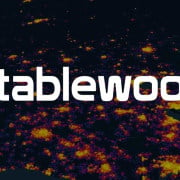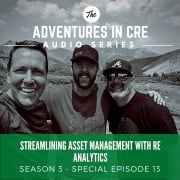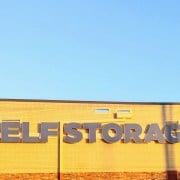Impact Development – Doing Good While Doing Well with Brian Murray | S3SP12
In this special episode of the A.CRE Audio Series, Sam, Michael, and Spencer talk to Brian Murray, the CEO of Shift Capital, about impact development. Shift Capital is a B-certified impact real estate group. A B-certification is a designation that certifies that a group focuses on social and environmental returns to society.
Founded with the mission of influencing the poverty equation, Brian Murray and his team at Shift Capital invest in underserved local communities. They function in such a way so that they’re not multi-family developers, not office developers, not affordable housing developers, not retail developers or holders but really a combination of all of those things. Listen to this episode to learn about how Shift Capital uses real estate to do good in the world.
Impact Development – Doing Good While Doing Well with Brian Murray
Or Listen to this Episode
Resources from this Episode
- A.CRE Real Estate Financial Modeling Career Accelerator
- A.CRE Development Models
- Education in Real Estate
Episode Transcript
Announcer (00:01):
Welcome to the Adventures in CRE Audio Series. Join Michael Belasco and Spencer Burton as they pull back the curtain on everything commercial real estate and introduce you to some of the top minds in the industry. If you want to take your skills to the next level and be part of a growing community of CRE professionals across the world, this is for you.
Sam Carlson (00:26):
Hello and welcome back to another podcast, the Adventures in CRE Podcast/Audio Series is really fun. Sometimes we do it in seasons, sometimes we get to do it with awesome guests like our guest today, Brian Murray. Brian, thanks for being here first and foremost.
Brian Murray (00:42):
Thanks for having me. Excited to be here.
Sam Carlson (00:45):
Yeah, we’re excited to have you. So just a quick little introduction and I think in terms of what Brian does and how he does, it is such a really cool and fresh way of looking at maybe a very traditional business like commercial real estate, very traditional. Brian is the CEO of Shift Capital, and if you go to his LinkedIn bio, it has a really slick, very smooth way of talking about how he combines social impact-focused real estate development in a very creative and entrepreneurial passionate way. So I’m excited to talk to you today. I know the team is. Michael, you and Brian became acquainted first, so I’m going to turn it over to you real quick to set up the conversation and talk about Shift Capital and what Brian’s up to today.
Michael Belasco (01:33):
Yeah, so we first got connected with Shift, Brian’s CFO, I believe, Ralph had reached out to us and just we started a conversation, and lo and behold, they’re right in my hometown here of Philadelphia. And so we had had a bunch of conversations and I was amazed at what they were doing and the projects they were putting together down in some up-and-coming neighborhoods around the city and even beyond Philadelphia. And so through a bunch of conversations, I decided that Brian would be an excellent guest to have on this show and I think he would really be a valuable resource of information to all of our audience members.
(02:15):
And so how about we kick it off? Brian, why don’t you give us an overview of what you do, Shift Capital, and just we’ll start there, what you guys are doing currently today and then maybe we’ll delve a bit into your background and your journey through real estate itself. But let’s start with Shift and what you guys are up to today.
Brian Murray (02:32):
Sure. Well, again, thanks for having me on guys. Always appreciate the opportunity to talk about our work and the communities we work in. We are a B-certified impact real estate group. And for those who don’t know what B-certified is, it’s a designation that certifies that we focus on not just our financial returns for our investors, which we do, but also our social and environmental returns to society and we measure that on a yearly basis. What that means though is that in real estate terms is that basically, we’re a vertically integrated group that focuses primarily first on place.
(03:14):
So we were founded with a very deliberate mission to influence the poverty equation and our belief that poverty exists at a zip code level, well, not our belief, this is data-driven, that zip code affects the success of young kids in our society more than probably any other factor and to create a model that was investing in place. What that meant was that we were investing in underserved neighborhoods, starting in our home city of Philadelphia, in a way that we were doing it at scale. We were doing it holistically and we were doing it out in front of the marketplace, so that we could really, from a real estate 101 perspective ensure that we had a low basis of real estate, which is a big key of this.
(04:10):
What that means is that we’re not multi-family developers, we’re not office developers, we’re not affordable housing developers, we’re not retail developers or holders, we’re really a combination of all of those things. We’ve done everything from 800-square-foot row homes to 800,000-square-foot, 19-acre industrial sites in the city that just so happen to be two blocks away from each other. But this approach from a holistic standpoint means that we’re focused on neighborhoods. We really believe in lifting all boats and that can only be done in underserved neighborhoods if you’re doing it at scale, so you can influence enough of that economic development trajectory.
(04:58):
And then the last piece is this idea of coming in early, so that we can really program and think strategically about how we work with the existing community, how we include them, how we think about wealth-building opportunities that they might be able to see as a result of our investments. And then long term, what does a responsible exit strategy look like? If you’re bringing in capital, outside capital and you’ve got to exit your real estate, “Are we in the negative sense just exacerbating what folks would consider the negative aspects of gentrification or displacement? And so that’s the core of what we do. In addition to that, we have for the last several years been focusing and working in other places where we partner up with other up-and-coming impact developers because we realized that journey was difficult for ourselves and we want to find ways in which to diversify the real estate space and also bring in more impact developers into the space. So that’s it in a nutshell and I’ll let you ask questions from there.
Spencer Burton (06:17):
A lot to impact there. Before we really dig into impact development, I’m very interested in how you approach capital and how you approach potential co-GP partnerships, but you personally, Brian, how did you get into impact development? It looks like you’ve been around, what, eight years at Shift, but certainly that there must have been some journey prior to that that led you to start Shift and get into this space.
Brian Murray (06:45):
Yeah, it’s important to understand wasn’t a real estate person. I didn’t have real estate experience, but I did … My background in brief was I was an accountant, I was a tech entrepreneur and I was a Peace Corps volunteer and you put that all into a bottle, you shake it all up and I went back to business school to try to combine all those things and I wanted to do good and do well at the same time. I didn’t want to be in the nonprofit space. I didn’t want to be in the governmental space. I knew I wanted to be an entrepreneur and I knew that this was … Our capital system, for all its faults, was the place that I wanted to be to drive better outcomes for society. And I stumbled into real estate while I was in business school doing a deal in 2008 that really opened my eyes into how real estate affects people’s lives directly, which is an important component of what I wanted to do. I wanted it to be meaningful directly with people.
(07:55):
And in fact, for me, there is no greater tool that impacts people’s lives than real estate. We’re in it 24 hours a day in whatever form that it takes, whether you’re walking through a neighborhood, whether you’re working, whether you’re living. And that was combined with the epiphany and I called it epiphany, but it was really … Everyone talks about a light bulb moment. Mine is a series of Christmas light bulb moments like hundreds and thousands of them over a little bit of time, but really understanding what type of capital runs through underserved neighborhoods and especially in our hometown of Philadelphia that has largely been dominated by slum lords of all types, taking advantage of communities and/or just dealing with the economics of low-income neighborhoods and the communities ended up being on the bad end of that.
(08:55):
And that was really the start of it for me. I fell in love with real estate almost right away and jumped into it. And if I knew then what I knew now, I don’t know if I would have gone entrepreneurial right off the bat because I’ve been in the startup for 12 years I feel like. And real estate, it takes a while to build and do these things, but we’ve done a lot of great work and I have no regrets.
Spencer Burton (09:30):
So let me ask, you’re now, I guess, 12 years as an entrepreneur, put another way, you have all the scars, you’ve looked at a lot of deals. In 2022, how do you know, Brian, when you see a deal that it’s a good deal? What is the criteria that you’re looking for? Because you said you’re not necessarily an apartment or an office or an industrial developer, but certainly there’s some criteria that you see that and you go, “That’s a good deal. That’s what I’m looking for.”
Brian Murray (10:01):
My quick response to that is that impact when you see it. And that isn’t meant to be too flippant, but there is a certain amount of that that comes with it. But we do have a series of criteria that we run everything through and lenses that we run everything through. So we look at our work in three different buckets and one is at least when we’re partnering up with others is, “The values, the ethics, the importance of impact to that sponsor and what they want to accomplish, do they share the same things that we do in terms of why they’re doing this?” So that’s one.
(10:45):
Two is the opportunity itself and I’ll come back to that because that really is I think the crux of your question, so, “Does the financials make sense? Does the neighborhood make sense? Does the project make sense?” Obviously, that’s a huge part of it. And third for us is, “What is actually the impact on the community itself?” And we try to bring all of those lenses to it, but assuming for a minute that we’ve got the right sponsor we want to work with in the case again where we partner up, in the cases where we do it ourselves, this applies directly is the deal itself. We’re primarily, I would say, driven by low-basis real estate, public transportation and opportunities for public-private partnerships. Our team is built on expertise in very, very complicated capital stacks, new market tax credits, LIHTC, every other type of city, state, federal subsidy. We did the first C-PACE project in Pennsylvania.
(12:00):
All of those things have to come into it, and if we feel like a deal has enough of those impact storylines that are going to drive some of those pieces, then that’s certainly a big part of the equation. But we ended up buying 2 million square feet of space in Philadelphia all within a five-minute block to public transportation. There’s only two subway lines in Philadelphia, so we’re not New York City or DC in that regard. And we were able to buy everything for $4 a square foot 10 years ago. And those are things that allow you to drive impact while also driving returns for investors.
Michael Belasco (12:42):
So let me ask you, outside of the numbers making sense, what do you define as successful when it comes to the impact of a project on a community?
Brian Murray (12:54):
“Do we create the ripple effect?” We look at our projects … Well, I guess there’s two pieces to this and they’re interrelated. On one hand, what’s the soul of that building? And typically, that soul of the building is actually not driven by the real estate directly. It’s actually driven by who’s in that real estate. So our two projects, one of them I’m sitting in right now where our offices are making studios north and south in Kensington and Philadelphia. For background, for those not familiar with Philadelphia, Kensington is the opioid center of the world, I’m sorry to say, and one of the most challenged neighborhoods you will probably ever see.
(13:41):
But nestled in between all that, in two large adaptive-reuse buildings equaling a total of about 250,000 square feet of space, we have probably 80 to 90 entrepreneurs and probably 500 to 600 jobs that are related to those entrepreneurs and those nonprofits and those small businesses. And when I think about success, I think about all those entrepreneurs in this neighborhood walking on the street, buying stuff from local businesses. And that economic ripple effect is a big part of it. But who we build for, whether it’s a charter school, whether it’s these entrepreneurs, whether it’s mixed-income housing, which we’re big believers of long term, we’re really looking at who are we bringing into in the neighborhoods we’re working in and how are we also then bringing that community into those projects as well.
(14:42):
So that might be a community benefits agreement. That could be having community members being directly part of the project in a variety of ways. It comes in a lot of different forms.
Sam Carlson (14:52):
You had said and when you were talking about pivoting into this, going back to school, you said a line and I wrote it down because I was like, “Oh, that’s a really good place to start.” You wanted to do good, but you also want wanted to do well. I think that was your exact quote. And doing, obviously, I can feel even by what you’re saying that there’s a ton of intent behind this, but I can also feel that there must be some compromises, some … Like the financial, the duty to the money involved in these transactions must be sometimes a conflict. And I’m wondering if that’s ever-present conflict, if that’s something on a daily basis, you’re like, “Hey, we have our north star, is doing good, but at the same time, you do have this fiduciary duty on the other hand.”
(15:42):
So I wonder how difficult does that make … And you have your three buckets. I went through each one of them, I’m like, “Oh, I see how he’s doing that,” but I’m wondering how much of that is, “Okay, math, two plus two is four,” and then how much of that is just sometimes pushing the math to the side a little bit, and What are the compromises you’re making? What is it like to execute your model that you’re doing on a daily basis?
Brian Murray (16:08):
It is the question, so I appreciate you asking. I personally, and it’s bearing out, believe that when you work in a neighborhood model, a concentrated scaled model, that the decisions we might make to let’s say give a certain tenant that we really, really like and think that’s going to be valuable to the community and to the place and the building, let’s say we make some compromises on our square footage with them, or yeah, the pricing of the rent to get them in there and make it work. Maybe we spent a couple more dollars than we would on TI to get them in. Ultimately, in the long run, that group is actually going to have a financial impact on the rest of the projects and the rest of the sites in a more positive way than trying to cut the sharpest deal every time with whoever walks in the door.
(17:09):
So there’s a curation to this that I think, actually, if you’re in it for the long term, absolutely plays out better for investors. And one good example of that that is concrete probably for a lot of real estate folks is, “Do you put the dollar store that’s going to pay 35 bucks a square foot or do you go maybe and try to find the local grocer, that’s Latino owned or what have you, but maybe they can only pay $23 a square foot?” And the short run is obviously the dollar store, you got credit tenant, it’s going to play out the cap rates on your exit, all those things we’re talking about, but if I own the buildings around that, well, the dollar store, in the long run, is actually going to have a more detrimental effect on the rest of my portfolio. And you made the right …
(18:13):
That’s one example of how we look at it, but I will tell you it’s an everyday conversation. It’s not simple. There’s a lot of gray there. And this does come back to we want to make a neighborhood a place desirable to live in for both the community that’s there, so that if they, in Kensington, people want to leave Kensington, can we make it a place where people want to stay in Kensington? And then, two, can we make it a place that other people want to live who are bringing discretionary income into that neighborhood? And that only happens with trying to figure out the right way to program and curate and bring the right type of groups in that are catering to all parts, but it definitely is compromising at sometimes and we do the best we can to navigate both of those challenges.
Spencer Burton (19:07):
That’s interesting. So it’s a holistic view. You’re looking at the whole rather than the individual and sometimes you give up on an individual asset in exchange for a broader benefit to sounds like not just the community but also to your holdings and as you represent your capital. Let me ask another question that’s somewhat related to what Sam’s describing. So in traditional real estate think, success is measured by value growth. Value growth generally is a function of rental growth. Rental growth is a function of tenants being able to pay more on a year-over-year basis. You brought up gentrification at the very beginning and so this goes there. They really conflict with one another, right?
Brian Murray (19:56):
Yeah.
Spencer Burton (19:56):
This idea that as you see success at least from a real estate standpoint in a neighborhood, wealth creation, rental growth, value growth and many people benefit from that, now I get not just the owners of real estate, but let’s be honest, wealth creation is asymmetrical and certain people will be left behind for whatever reason. You couple that with people outside the neighborhood moving in and they bring in a rent expectation that pushes up rent. How do you view the challenges around that gentrification piece to success? How do you ensure that the fabric of the neighborhood is maintained and those who want to stay in the neighborhood can, while at the same time recognizing the reality of success is value growth? And value growth oftentimes has a side impact of unfortunately making great areas unaffordable. So talk us through how you confront that and any strategies that your firm and others are deploying in order to combat that.
Brian Murray (21:15):
Yeah, I think this is the question of society right now. We’ve seen neighborhood after neighborhood and I think that people have very opposing views on the positivity of that. And it probably depends on in that asymmetric relationship where do you sit in that bucket. It is probably three or four hours of conversation. What I’ll say is the one … There’s three comments that I want to make here. One is that we do our best to lean as much toward the community as possible. And if a group like us isn’t coming into this neighborhood and investing either two things are going to happen. Either the status quo and if you’ve ever been to Kensington as one example of many places we invest, the status quo is not acceptable for people who live here, crime, drugs, a lot of challenges going on here. Or it will gentrify in the more traditional way which is typically a lot of piranhas, right? There’s usually lot of little fast-moving smaller players that eat away at land value.
(22:49):
But ultimately maybe they’re a little nebulous. It’s not like the related companies or Shift, but ultimately they eat away at and really drive that gentrification equation. So we’re open book about it. We don’t claim that we can prevent displacement. We’d like to talk about it openly and there’s a lot of great studies on that we can dive into. But at the same time, that lean is really, really important to who we are and what we do. And it’s a dangerous position because sometimes we are considered perhaps the gentrifiers in the negative sense and we have to wear our hats of trying to do the best job we can in that realm. And sometimes there’s going to be people that view it differently and I get that.
(23:52):
The more important question is what do we do about it, right? So for the last 10 years, we have been think … There are no very few if no financial tools available to cities and developers to prevent that eternal interest in developers to get 15% returns plus on stuff. If we’re successful and we sell it, someone’s buying it thinking hey, I want 15% returns, which ultimately is going to continue and continue and continue. So we started the first neighborhood trust in the country which is a trust that we helped found with a few other stakeholders that is now 100% controlled by the community and business owners in the neighborhood. They own an entire city block and are buying more real estate in the neighborhood with an explicit goal in an evergreen fund to keep its mission preserved. On the commercial side is a commercial corridor neighborhood trust for the community.
(25:08):
So this is funded by the Ford Foundation, by locally The Barra Foundation, Spring Point Foundation, all with what are called PRIs, which are program-related investments that require 2, 3, 4% returns instead of 15% returns, run by an incredible executive director locally that is absolutely crushing it named Adriana Abizadeh. And we are fully trying to support those types of vehicles and those tools because there’s not a lot of options out there for cities to create what we think needs to happen which is mixed-income communities. We need to find a way to preserve and develop at the same time and that’s ultimately what we’re trying to do when we think about this over a long period of time.
Michael Belasco (25:59):
Awesome. I want to take the last few minutes we have here, dive into some of the specifics, some of your projects maybe. I read through, I saw a deck from you guys that you have this Developer-in-Residence Program that you guys are doing. Speak to … We’ll open the floor to you to talk about some of your projects, some of the stuff you’re doing to help, I guess, start new developers in the space that maybe have a track record and just bridge the gap from where they are today to getting them some real exposure to some opportunities. So I’d love to just open it up to you and let you go.
Brian Murray (26:35):
Sure, yeah, yeah. So probably two things to touch on with our time remaining. One is, as you mentioned, our Developer-in-Residence Program. I came from the venture world where venture capitalists have entrepreneurs in residence, and in the real estate world, I hadn’t seen anybody do something similar to that. There’s a local entrepreneur named Alex Robles and his partner Juan Saenz, a Latino-owned affordable housing group trying to do workforce in the city and naturally occurring affordable housing. Both of them are incredible. Alex is actually from the neighborhood. He went to Wharton, 10 years of real estate experience and he spent two and a half years, and other than very small projects, he just couldn’t get in. It was the chicken or egg in the affordable housing space.
(27:37):
So we had a need at the time. I approached Alex and said, Alex, “How about you come to us for three years?” I said, “You can take on some of our larger projects where you can lead and get some of that track record built up. You can work on some of your own projects in the meantime. Maybe we’ll find some stuff to do together. I’ll introduce you to everyone, and then in three years, I’m kicking you out of here and you’re on your own.” And we’re in year two of that Developer-in-Residence Program. These guys have done actually two deals already on their own and it’s just been an incredible experience. But it speaks to the larger challenge of how … It’s no accident that you got to have money to make money, but nowhere is that more true than in real estate. And there’s a lot of great hungry young talent out there that wants to do good and wants to do real estate and this is our one way in which we’re trying to help people.
Michael Belasco (28:42):
Before you continue …
Brian Murray (28:43):
Yeah, go ahead.
Michael Belasco (28:45):
… [inaudible 00:28:44] getting bombarded with emails, is this something you’re planning to continue to do or is this just a one off or what’s your plan?
Brian Murray (28:52):
So that rolls up into our next-gen impact program which is supporting impact developers across the country, which I was talking about earlier. So I don’t think we’re going to do another Developer-in-Residence Program until we finish with them. It’s possible we might be open, but at the moment, that Developer-in-Residence Program is shut. I do get emails about it quite a bit, but certainly something we want to continue to do down the road.
Sam Carlson (29:26):
Awesome. Well, I know we’re about out of time here, but let me just end here. I’m really impressed. We talk with people a lot on this podcast and a lot of people are doing things with tech, which is really interesting and innovative. But I don’t know if we’ve talked … I can’t remember everyone, but I don’t know if we’ve talked with anybody who has taken the stance of, “My job, my legacy in life is to make a ripple throughout,” and that was one word you said a couple of times, and again, stuck in my head. And I don’t know, maybe this podcast will be a part of that ripple. Maybe we’ll be able to lend a couple of people or send them in that direction and get people charting a course to where they can do good and still do well.
(30:09):
So Brian, thanks for being here. Thanks for sharing this. I’m glad that you and Michael connected. I’m glad that we got to be introduced to you, to what you’re doing. If people want to reach out to you or to Shift, what’s the best way to connect?
Brian Murray (30:24):
Yeah, the best way to connect is probably on LinkedIn. I’m an active user. I pay attention to inbound. If you’re interested in connecting with me, please give me a note. Why? I don’t press accept on all of them, but I do pay attention. That’s probably the best way. Obviously, our website, shiftcapital.us talks about a lot of the things that we’re talking about here and there is some abilities for folks to get in touch with us if they’re interested in that, in a possible partnership with us and we certainly have open doors to that at the moment as well. Awesome.
Sam Carlson (31:02):
shiftcapital.us. Brian, thanks for being here, and for everybody that got to watch or listen, thanks for listening. We’ll see you on the next podcast.
Announcer (31:08):
Thanks for tuning into this episode of the Adventures in CRE Audio Series. For show notes and additional resources, head over to www.adventuresincre.com/audio series.
Frequently Asked Questions about Impact Development with Brian Murray of Shift Capital








